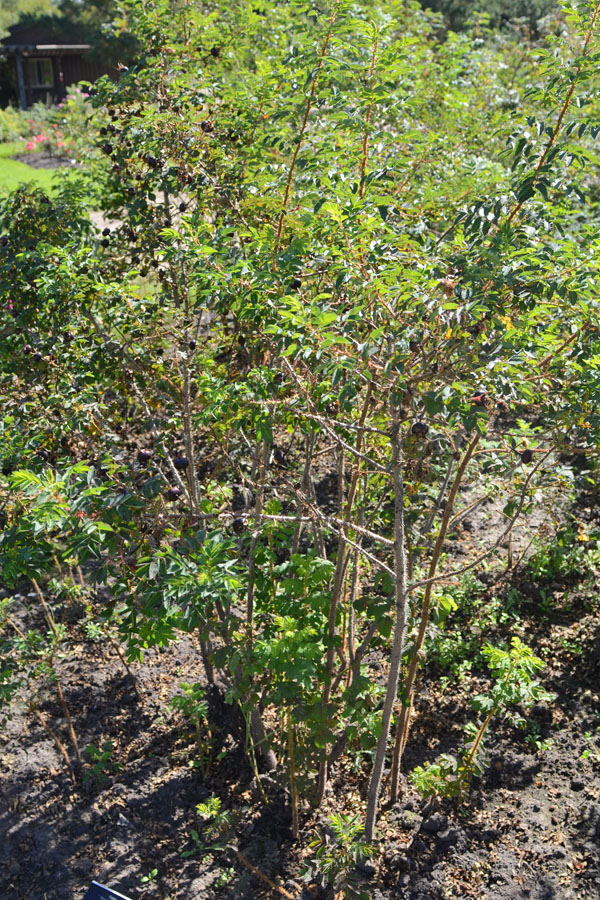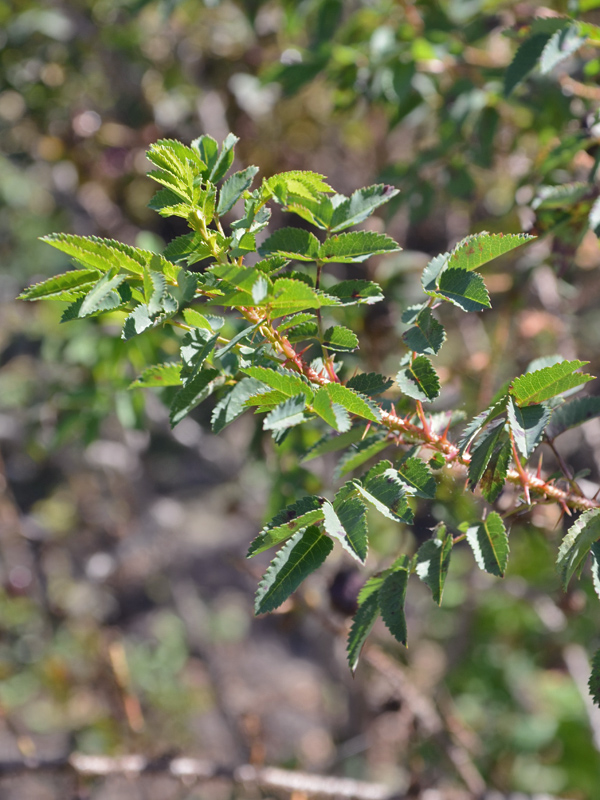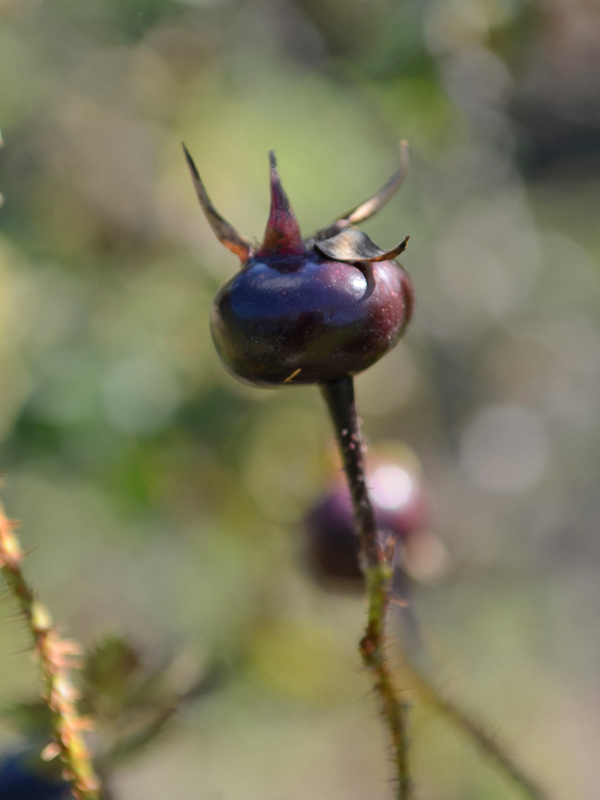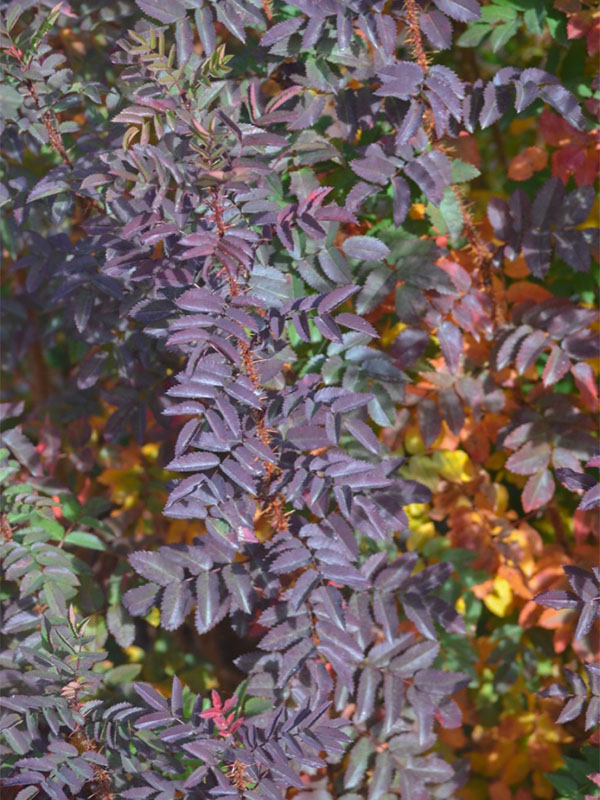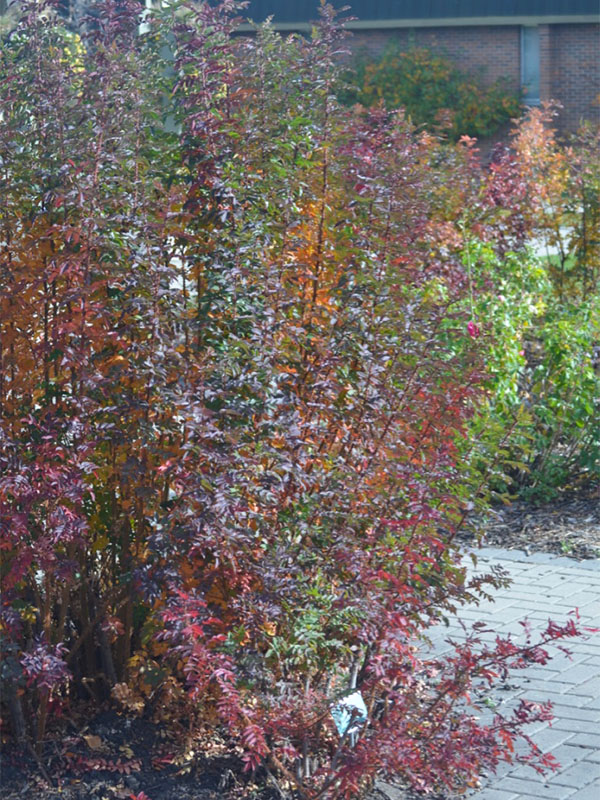| Shape | Compact spreading. |
| Landscape | Borders, hedges, climbers, rock garden, flower beds, containers, cut flowers, can accommodate almost any garden need. |
| Cultivation | Grow in full sun in moist but well-drained soil. Suckers should be removed annually. |
| Pests | Aphids, leafhoppers, spider mites, scale insects, caterpillars, mildew, dieback, canker, viruses, rust and rose slugs. |
| Notable Specimens | The Devonian Botanic Garden, Devon, Alberta, Canada.
Olds College, Olds, Alberta, Canada. |
| Habitat | Horticultural origin. |
| Bark/Stem Description | Smooth, semi-glossy robust woody stems with small long characteristic rose spines/thorns. |
| Leaf Description | Semi-glossy, robust, serrated elliptic-pinnate leaves. |
| Flower Description | Solitary, or clustered sprays of showy 26 - 38 petaled flowers arranged in tight whorls. |
| Fruit Description | Small round, almost purple-black rosehips. |
| Colour Description | Showy blooms creamy-peach in colour, deep reddish-purple to medium green foliage, purple-black rosehip fruits and brownish-green bark with reddish-brown spines/thorns. |
| Texture Description | Medium to thorny. |
